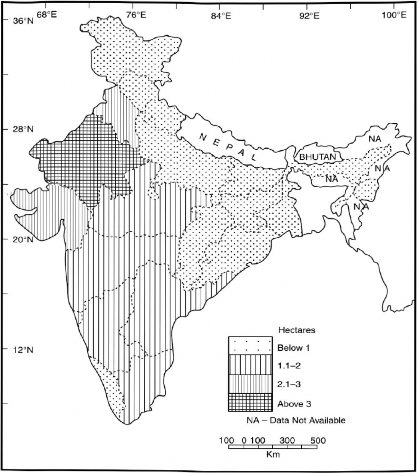(i) Land Tenure and Land Tenancy
The ownership of agricultural land is determined by the law of land tenure and land tenancy. In the primitive societies like those of the shifting cultivators
{Jhumias), land belongs to the community. Subsequently, in India, the land ownership rights were vested in the king and the government. During the British period, a new system of land tenancy known as Zamindari, Mahalwari, and Royatwari was introduced to manage the agricultural land and to collect the land
revenue. After independence, the Zamindari system was abolished and the rights of the tillers over cultivated land were restored.

Fig. 9.5 Size of Holdings (2005-06)
After the abolition of Zamindari system, a number of land reform legislations have been passed by the central and state governments, but still there is enough scope to restore the rights of the actual tillers and landless labourers. Still, there are numerous absentee landlords, many of them possessing land more than the ceiling act permits. Only Punjab, Haryana, and Uttar Pradesh are the states in which consolidation of holdings has been completed.
